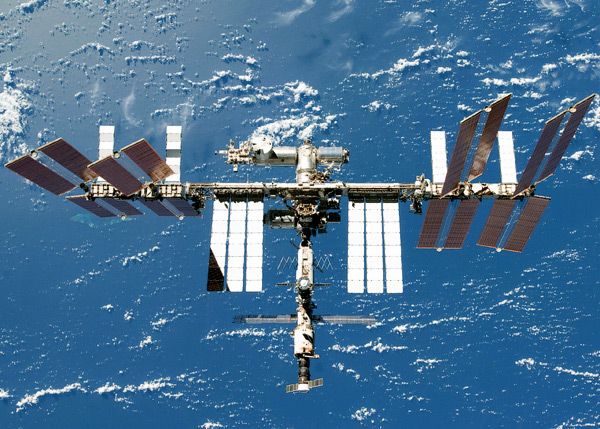
Organized group circling behavior unique to spaceflight may represent stereotyped motor behavior, rewarding effects of physical exercise, or vestibular sensation produced via self-motion. Within 7-10 days after launch, younger (but not older), mice began to exhibit distinctive circling or 'race-tracking' behavior that evolved into coordinated group activity. Physical activity was greater in younger flight mice as compared to identically-housed ground controls, and followed the circadian cycle.
#HISTORY OF THE INTERNATIONAL SPACE STATION FULL#
Spaceflown mice engaged in a full range of species-typical behaviors. Following 4-day transit from Earth to ISS, video images were acquired on orbit from 16- and 32-week-old female mice. Here we report the first detailed behavioral analysis of mice flown in the NASA Rodent Habitat on the International Space Station (ISS). Despite a robust history of domestic and international spaceflight research, understanding behavioral adaptation to the space environment for extended durations is scant. Interest in space habitation has grown dramatically with planning underway for the first human transit to Mars.

Through interplanetary probes, orbiting satellites and camera-wielding astronauts on space shuttles and the and the International Space Station, NASA and partners such as the European Space Agency (ESA) have compiled an ever-growing image library of our own planet. In the three decades since then, the agency’s Earth Science program observation has expanded along with both the technological ability and the growing imperative to do so.

In 1989, NASA formalized a Mission to Planet Earth, in which examining the third planet from the sun was no longer incidental to its work but central to it. A Library of Earth Images Continues to Grow The image of Earth had to be repeatedly replaced because so many people touched it.

On the initiative of Carl Sagan, who first proposed photographing Earth with Voyager cameras in 1981, Voyager 1 snapped the image of a barely visible Earth that became known as the “ Pale Blue Dot.” Voyager also captured images of Neptune, Uranus, Saturn, Jupiter and Venus, and staff at NASA’s Jet Propulsion Laboratory mounted the set as a mosaic on an auditorium wall. 2010 Street vendor Mohamed Bouazizi self-immolates in Tunisia, igniting the Arab SpringĪmong the most famous of those images was taken in 1990.


 0 kommentar(er)
0 kommentar(er)
